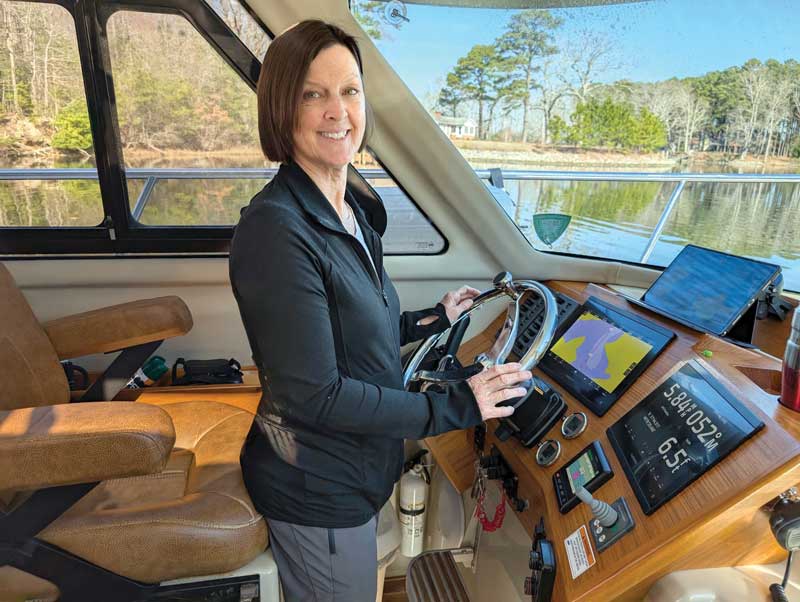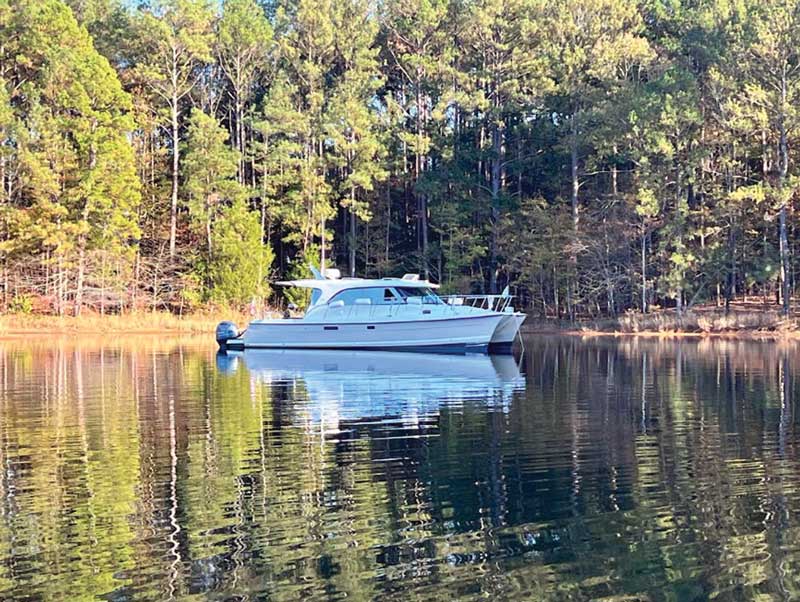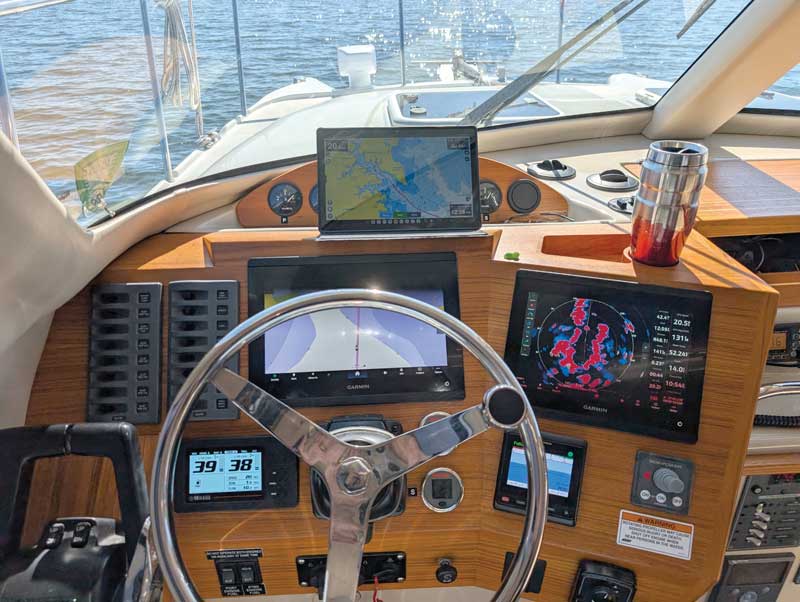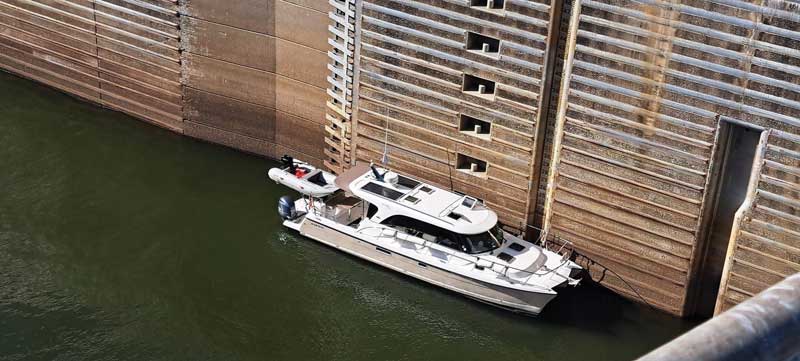In our last article, we discussed how to physically prepare for your voyage on America’s Great Loop. Now you are set with your boat, dinghy, anchor, clothing, and so much more… or… at least prioritized and organized if not actually acquired. Congratulations, you are well on your way to the trip of a lifetime. But the physical preparation is only one step; a big one, but still only one.

As previously mentioned, at PropTalk Magazine we suggest you think of it in three distinct dimensions: what is physically required (done), the intellectual aspects you must get your head around, and the emotional issues behind leaving your current life for a year-long trip. This is the second of a three-part series on these topics and addresses the intellectual preparation required for your voyage.
Route Selection
With the concept of “first things first,” knowing your pathway is critical. The trip can be as short as 5500 miles or as long as more than 8500. There are multiple routes, side trips, and options available to you. Understanding your intended route ahead of time will impact many things including trip duration, estimated cost, and ability to intersect with friends and family. It sounds like a lot but worry not. There is a wealth of information available to you in all forms allowing you to consume content in the manner you prefer.
The America’s Great Loop Cruisers Association (AGLCA) is an organization dedicated to the adventure offering webinars, seminars, periodicals, podcasts, and YouTube sessions. Joining AGLCA is highly recommended for both the planning and execution of the trip. There are also cruisers who have dedicated YouTube channels to every minute of their trip. Finally, there are many books written with one, “The Looper’s Companion Guide: Cruising America’s Great Loop,” that offers day by day routes with stops and attractions clearly spelled out. Waterway Guide publishes resources as well.

For me, I leaned excessively on the Podcast series produced by AGLCA for it enabled me to “study” while doing other activities like cutting grass and household maintenance. I backed up multiple years and listened straight through with the program covering every aspect of the trip imaginable. The bottom line is to just start somewhere and then keep digging. You will quickly come to decisions on which route is right for you. The history of the Erie Canal might pull you away from the beauty of Lake Champlain. The Bahamas might be more than you want to take on. The Gulf crossing might have you selecting the Big Bend route versus a straight crossing. The only thing that matters is that you are planning the right trip for you and your crew.
Navigation
Gone are the days of huge charts, sextants, and dedicated navigators. The charts are still very much available and do provide great perspective on segments of the trip. However, most navigation is done with a series of modern hardware and software ranging in cost from very expensive to free. And it all works very, very well.
Most boats have chartplotters with a presentation not too different from a modern car using Google Maps. These work great and are always recommended. However, you can get most of the same functionality (except water depth) with a $200 tablet running either Navionics, Aquamaps, Active Captain, or Argo. Given the low cost of the software solutions, many captains have several or all of these.
Learning to use these tools is incredibly simple. Navionics and Aquamaps offer a free version with limited map coverage allowing you to try before you buy. You don’t even need a boat to start practicing. Simply load the software in your living room and give it a try. Information voids can quickly be filled in with YouTube videos, and before long your comfort level with the tools will soar.

The tools all integrate with a file format called GPX. This allows you to establish a route in one tool and quickly port it to the others enabling you to benefit from each offering’s strength. For example, it was common on the trip for captains to get together and plan the next day’s route. I would take my $200 tablet with Navionics to the meeting. Using the Auto-Route feature, I could quickly get a sense of the path and then manipulate it until I felt it was correct. Returning to the boat, I could upload it to Active Captain which would sync the route to the chartplotter. It sounds complicated but once figured out, it is incredibly simple.
Boat Management
For many Loopers, the handling and management of their boat is a non-issue due to many years of cruising experience. For others, however, the Great Loop represents their first serious boating adventure. This entails learning a lot. In addition to boat systems, engine, and electronics, operational knowledge of handling the vessel in different or adverse circumstances while coordinating with your mate is a learning curve. In discussions with one very senior Great Lakes cruiser, he was surprised to learn how much his lack of knowledge on tides and currents could affect his captaining abilities. For me, it was backing into a slip being guided only by my Admiral’s (read spouse) commands. Whereas there is no replacement for experience for those lower on the learning curve, there are companies and organizations associated with AGLCA that provide hands-on learning on all of these topics. Some even come and perform the training on your boat taking things from the theoretical to the practical.

Immersion
Perhaps the best and quickest way to get your head around most of these issues is to attend an AGLCA Rendezvous, which features informational seminars hosted in various cities around the country. The format typically consists of two tracks: planners and those currently enroute. It is usually a four-day format covering topics such as navigation, weather, route segments, electronics, etc. Newbies to Looping learn much of what they need to make the voyage.
Rest Assured
Being the better part of a year, it is a big trip. But rest assured, with more than 250 boats completing the Loop last year, it is way more manageable than you think. With such undertakings, knowledge is the ally to success, and so many resources are available to support you. As with any big trip, the more prepared, the higher the likelihood of a positive outcome. So, the easiest and cheapest start to the journey is through self-discovery. Before you know it, the excitement and anticipation of a trip of a lifetime will propel you forward into the adventure.
About the Authors: Aubrey and Terri Smoot and their dog, Yudee, completed the Great Loop in the 2023/2024 fleet aboard their Aspen C-108 power catamaran Shorebilly Too. They hail from Kilmarnock, VA, and their story was featured in the November 2024 PropTalk (proptalk.com/great-loop-real-retirement-adventure).
To catch up on part one in this three-part series, check out Preparing to Cruise the Great Loop Part 1: The Physical Prep.
Editor's Note: We want to thank Cruisers University for sponsoring this three-part series. The Fall 2025 Semester of Cruisers University will be held Monday, October 6 through Friday, October 10 at The Historic Inns of Annapolis. Registration will open in May. More than 75 classes are available for sailors and powerboaters alike who have an interest in learning the fundamentals of blue water cruising. Led by experienced cruisers and sailing industry professionals, the curriculum includes classes such as marine weather forecasting, traditional navigation techniques, electronic tablet navigation, diesel maintenance, heavy weather sailing, and electrical systems. To learn more, visit cruisersuniversity.com, and/or the Annapolis Boat Shows website.